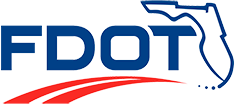Executive Summary
As per Chapter 4 of the FDOT Interchange Access Request User’s Guide published in January 2018, herein referred to as “FDOT IARUG”, this Systems Interchange Modification Report (SIMR) re-evaluation has been initiated by the design-build firm based on the proposed design change (New Concept) to the Request for Proposal (RFP) concept and to show that the New Concept satisfies the Safety Operational and Engineering (SO&E) requirements and Federal Highway Administration (FHWA) policy points. The intent of this re-evaluation is to demonstrate that the New Concept operates equal to or better than the RFP Concept (see Appendix A for RFP Concept and New Concept Designs; New Concept design changes described in Section 1.2).
Per Table 4-1 of the FDOT IARUG, the RFP Concept has been used as the basis for comparison when evaluating the New Concept initially developed as Alternative Technical Concept (ATC) 12C during the Technical Proposal Phase. The RFP Concept for State Road (SR) 836 is based on the SR 836 SIMR Alternative 11-A provided in the RFP Reference Document MDXRD-01 Concept Plans.
The results from the freeway, ramp and intersection operational analyses demonstrate that the New Concept will operate equal to or better than the RFP Concept and that the proposed improvements will provide the following major operational benefits:
• SR 836 mainline (viaduct), two elevated bypass lanes in each direction:
o Eliminates I-95 system degradation associated with both existing and RFP Concept conditions from impacting the operation of SR 836.
o Eliminates all existing weaving movements providing uninterrupted flow between SR 836 and I-395 in both the eastbound (EB) and westbound (WB) directions.
o Provides direct off-ramp to southbound (SB) I-95 eliminating existing weaving condition with NW 12 Avenue on-ramp traffic.
• SR 836 WB collector distributor system reconfiguration:
o Traffic from SB I-95 is isolated from traffic exiting to NW 12 Avenue addressing the degraded existing weaving conditions.
o New lane configuration eliminates RFP Concept northbound (NB) I-95 to WB SR 836 drop lane into NW 12 Avenue which would require all traffic to change lanes in order to continue onto WB SR 836.
• Widening of the EB SR 836 to NB I-95 ramp: o Provides the capacity to meet the demand while eliminating the underutilized flyover ramp proposed under RFP Concept.
o Eliminates existing and RFP Concept speed differential between vehicles destined for NB I-95 and adjacent EB SR 836 lanes.
• NB I-95 lane re-purposing o Eliminates RFP Concept weaving on NB I-95 between NE 29 Street and I-195 for vehicles originating from NW 12 Avenue destined for I-95 northbound.
A Safety Analysis Report (SAR) was prepared by FDOT in October 2018 to document the crash statistics for the most recent five years and perform a quantitative safety analysis to predict the safety performance of the RFP Concept. Similar to the operational analysis, the safety performance of the RFP Concept was used as the basis for comparison when performing the quantitative safety analysis of the New Concept. Results from the safety analysis demonstrate that overall the New Concept performs equal to the RFP Concept. Based on the findings of this SIMR re-evaluation, the New Concept is recommended for construction as the proposed improvements to the RFP Concept will:
• Enhance operations and safety
• Reduce right-of-way impacts
• Meet the two FHWA Policy Requirements.
Purpose and Need
Download the Purpose and Need (PDF, 1.2MB)
Need for improvements is based on a combination of substandard traffic conditions, highway planning objectives and the interaction with other planned facility improvements impacting the proposed project area. Project objectives included the study of the following issues: increase capacity to prevent existing and future traffic congestion, improve safety by alleviating existing deficiencies, explore access issues, establish continuity, etc.
Travel Time Savings
Please download the study report to obtain this information.
